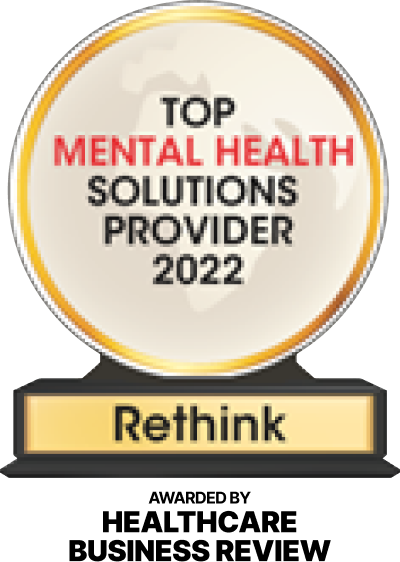Our CEO, had the pleasure of sitting on a panel with Collective Health, Lantern, AirBnB and Evidation Health on February 27, 2018. The topic was “Committing to Wellness in the Workplace.”
The panelists included:
- Jude Komuves, Head of People @ Collective Health
- Alejandro Foung, Co-founder & CEO @ Lantern
- Julie Black, CCO & General Manager @ Evidation Health’s Achievement Platform
- Matt Lowe, Head of Health & Safety @ Airbnb
We’re happy to share the Q&A in this post.
Q – What does wellness mean to you and your company?
A – For RethinkCare, it’s about culture. Are you creating a culture in which individuals are equipped to be at their best and where teams can collaborate, challenge and create sustainable environments for individual performance and company success?
I like Bersin by Deloitte’s analysis that the market has moved from wellness to wellbeing and performance.
We also like to start with engagement. The last Gallup poll estimates only 13% of people are engaged at work. We encourage team members to embrace what we create. Use our products. And take personal pride and accountability in creating a culture based on wellbeing and performance.
Q – Most leaders can tell you how they measure things like attrition, but not many have a strong basis for measuring wellness. What metrics do you use to do this?
Quarterly surveys. Go beyond the basics. Ask questions about wellness and stress levels. Within our training products, we ask people about their stress, the quality of their sleep and we see what programs people are using. It’s aggregate data, but it provides insight into the company as a whole.
Q – What do you think is the biggest misconception about wellness? (i.e., it’s not just yoga classes)
A – Points and rewards programs do not create wellness on their own. We encourage clients to move beyond simple engagement, points, rewards and challenges to get more data and insights.
The best digital solutions are moving to assess what people need. Prescribe the right solutions. And measure the outcomes. Moving to a data-driven approach with connected devices means we have opportunities that we’ve never had before. Companies like Validik and Human API provide data across devices. That enables companies like RethinkCare and Lantern to provide digital training solutions to move the needle and change employee outcomes.
Q – How do you communicate the importance of wellness to an executive team?
A – If you have the right executives, they already know the importance. This conversation should not be limited to HR. Taking care of employees’ mental, emotional and physical wellbeing is every manager’s job. If the C-suite isn’t engaged, they have a major blind spot.
At RethinkCare, we practice what we preach. We have a 3 PM mindfulness practice everyday. We do a quarterly offsite. We have healthy snacks. We expect employees to embrace and be power users in the products we create, as well as in creating the culture on their team and in the company as a whole.
Q – What aspects of employee wellness tend to be overlooked?
A – Stress, resilience and mental and emotional wellbeing. It’s one of the reasons we have so many partners. While the wellness space cut its teeth on employee engagement and points and rewards, it now has to graduate to activity-based learning. To be able to manage stress, anxiety and ongoing disruption and change, employees need to learn and immediately be able to apply new skills.
Statistics show that too much of the “read an article, get points, connect your fitbit, get points, do an HRA, get points” approach leads to lots of points, but not enough improvement in health measures.
Q – Beyond simply including such a program, how can companies demonstrate to their employees (current and prospective) their commitment to a culture of wellness? Can you give concrete examples within your own organization?
A – Focus on what happens in your day to day.
Does your CEO talk about it, then work till 10 PM? Does your Head of HR talk about wellness, then order in donuts and pizza? Are your engineers hopped up on caffeine and redbull all the time? These are root causes on ongoing stress, insomnia and burnout.
Q – Across all stages, what are tactics for getting employees engaged and keeping this engagement consistent? (Are employees aware of the offerings? Do they know how to access benefits available to them? Is there incentive for them to participate?)
A – HR has to get better at marketing to employees. It’s a fight for mindshare and you’re up against Facebook, Youtube, Snapchat, Slack, and dozens of other distractions in the workplace.
The best companies run ongoing engagement programs where they let employees know they care and they put their time and attention behind it. It’s part of their culture.
Q – How do you make the business case for wellness? Wellness is something that companies are beginning to really invest in—how has each panelist/company demonstrated (or defined) ROI?
A – Our clients are interested in absenteeism, turnover, employee satisfaction scores and the cost of healthcare. More are using their third party analytics to crunch the numbers and correlate solutions with changing outcomes. We have major healthcare providers using their outside providers to run the numbers. We expect this to become more common.
Too many talk about data, but then don’t run the numbers. In our own client case studies, we’ve seen decreases absenteeism by 2 days, decreases in turnover by 35% and increases in employee satisfaction by 40%. When a company commits to employee wellness, they see real benefits.
Q – Do employers have an obligation to address employees’ lives outside of the office and work day? How does this translate to a more productive, healthy workforce, and what are some examples?
A – It’s a two way street. Do employees have an obligation to manage personal stress and show up and do a good job. Yes! And so employees have the obligation to offer solutions that help the whole employee live healthier and happier lives.
Q – Research around the efficacy of workplace wellness programs has been a mixed bag—a recent Bloomberg article reported on a new study showing workplace wellness programs may not actually be saving much money or making employees healthier, while previous studies have found they do.
A – You can find a study that says anything. Ask your employees and monitor results over time. Companies either commit to a data-driven approach or they don’t. Far too many companies collect tons of data on employees and they don’t use it to actually help them manage their wellbeing and performance.
Q – Is money an incentive for participation in wellness programs? If not, what is?
A – Yes and no. People like money. However, there’s been a lot of research that indicates intrinsic motivators (passion, purpose, play) are more power to drive the right behaviors. Great books on the topic include: Primed to Perform, Drive and Why We Work.
Q – Thinking about wellness through the lens of diversity: how can you make it accessible to all and meet everyone where they are?
A – This is the importance of personalized digital solutions, coupled with a commitment to create community in the workplace. In today’s political environment, we’ve had growing requests for more programs on diversity, inclusion and acceptance.
Q – How do you create wellness programs that don’t turn off 99% of your employee population because they don’t resonate?
A – Test it first and go with the best. The best-in-class providers in the wellbeing space have to meet the criteria, design and needs of large employers, as well as payer/providers. When selecting solutions, push hard on the science behind them, look at the providers’ clients and their partners and kick the tires to understand what bars they’ve had to reach to get where they are. One of the biggest questions is, do they integrate into other solutions, and what major wellness platforms recommend them to their own clients?
Q – Particularly around mental health and stress, how do you tackle stigma by defining wellness and building that culture in a way that is as inclusive as possible?
A – Everyone is stressed. When you’re talking about mental and emotional wellbeing, use common sense language. It’s not mental health. It’s not mental illness. It’s stress. The pace of business and ongoing disruption is taking a toll on everyone from the CEO on down. Being open and authentic about what the pace of business is doing to employees is important. They know they are stressed. They know their friends and family members are too. And they know they need the tools and training to be resilient in the face of ongoing change.
Q – What action items do you recommend for audience members?
A – First, you want to buy RethinkCare. clearly. Kidding aside, just get started. Most companies waste a tremendous amount of money on solutions with no data.
In fact, one of our clients gives employees $1500/yr, approaching $25M annually to use on wellness (classes, golfing, gym memberships, etc.) with no data. For $10-15 a year, per employee, we can give them access to 250+ programs on stress, sleep, EQ, mindfulness, etc., make recommendations based on the individual’s needs and help monitor progress towards their wellness and wellbeing goals.
Put your wellness dollars into data driven programs. Prove ROI. Make wellness part of your culture.
Watch the full panel session here:
Photo by rawpixel.com on Unsplash










